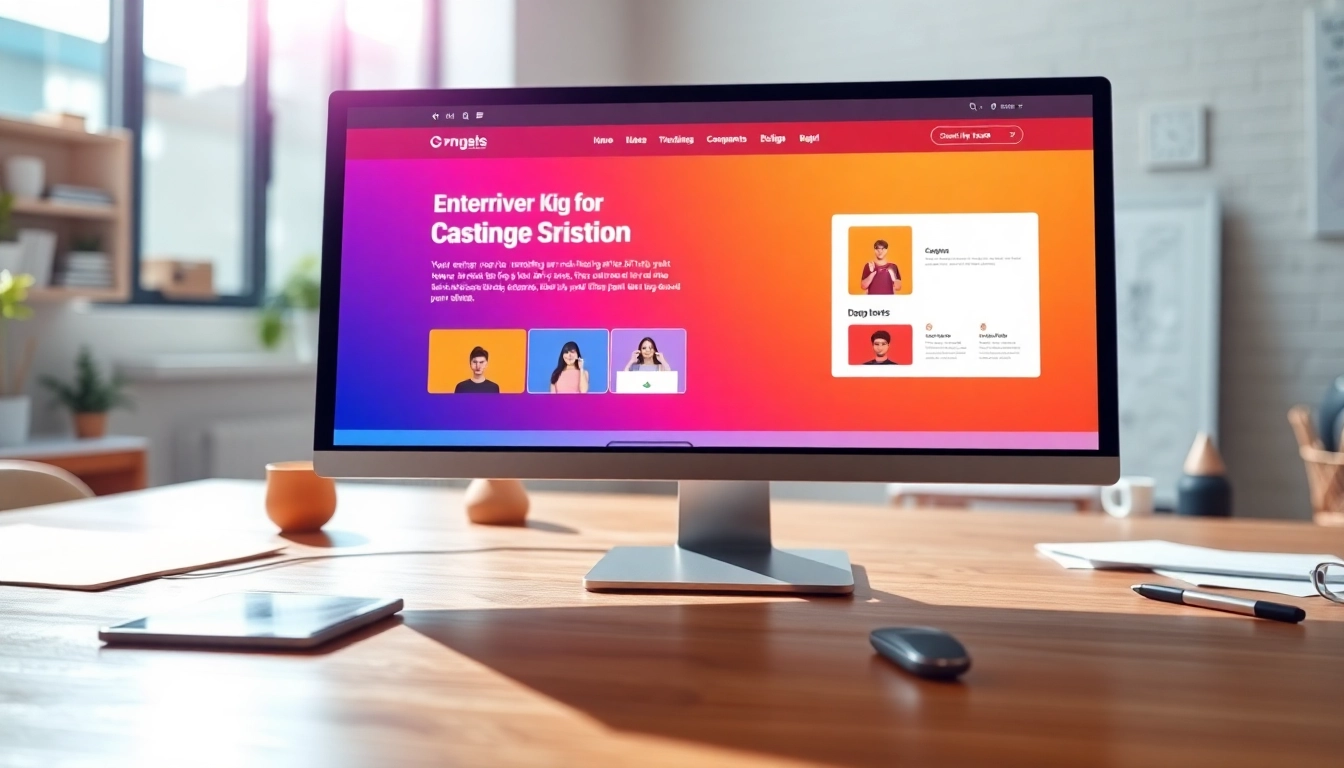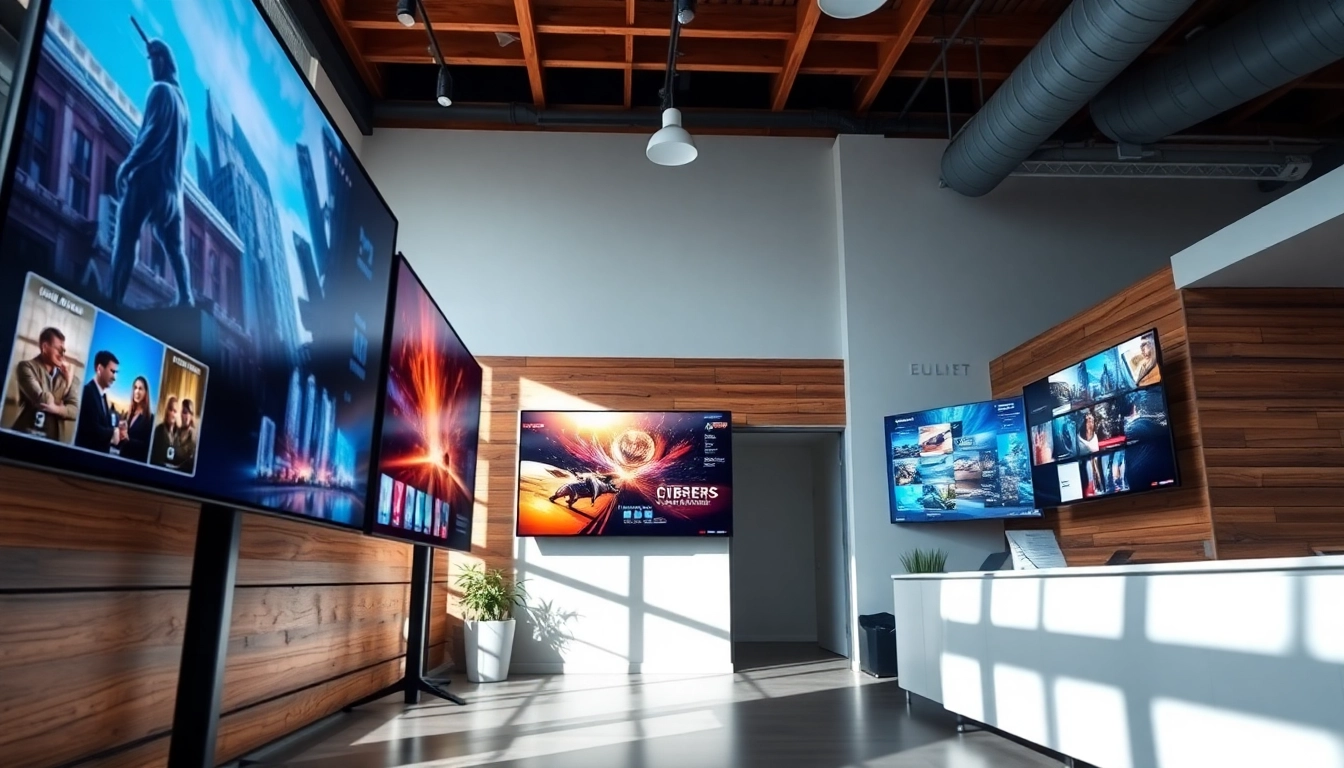Effective Strategies for Engaging Website Design That Captivates Users
Understanding the Importance of Website Design
Website design is more than just aesthetics; it encompasses the entire process of planning, creating, and maintaining websites. This crucial discipline employs numerous skills and elements, including web graphic design, user interface design, and search engine optimization. Essentially, a well-executed website design can significantly impact brand identity, usability, and the overall experience of web users. It is imperative for businesses to grasp the importance of effective website design as it is often the first point of contact for potential customers.
What is Website Design?
Website design refers to the process of creating websites, which includes various disciplines and areas, such as graphic design, interface design, and content production. The overarching aim is to make the user experience as informative and enjoyable as possible. Good web design fosters an emotional connection with visitors by enhancing usability and accessibility, optimizing navigation, and employing visual hierarchy principles.
Why Website Design Matters for Businesses
In an age where consumers are continually bombarded by online information, the relevance of website design becomes increasingly apparent. Businesses that invest in effective website design stand out amid a sea of competition. It can lead to increased consumer trust, enhance brand loyalty, and help convert mere page views into actionable outcomes such as sales or sign-ups. A well-designed website can differentiate a brand, cater to user needs, and ultimately drive business growth.
Key Elements of Successful Website Design
Several critical elements combine to create effective website design. These include:
- Visual Design: This encompasses the overall layout, color scheme, fonts, and images utilized throughout the site.
- Usability: A website should be functional and easy to navigate. Visitors need to find relevant information quickly without facing obstacles or confusion.
- Content Quality: Compelling content resonates with visitors and adds value to their experience.
- Mobile Responsiveness: With the rise in mobile browsing, ensuring that a website is mobile-friendly is non-negotiable.
- SEO Optimization: A well-designed site also needs to be optimized for search engines to increase visibility and organic traffic.
Essential Components of Effective Website Design
User Interface and User Experience Design Principles
UI (User Interface) and UX (User Experience) are two essential components of web design. UI focuses on the layout and interactive elements of a site. It involves buttons, sliders, and image galleries – essentially everything that users interact with directly. UX, on the other hand, is about the overall experience a user has with the website. This includes how they feel when navigating it and whether their expectations are met.
Graphic Design Elements in Website Design
Graphic design plays a pivotal role in website design. Elements such as logos, color schemes, and imagery contribute to a website’s branding and aesthetic. Effective graphic design utilizes principles like contrast, alignment, balance, and repetition to create a visually appealing site that enhances user interaction and engagement.
Responsive Design for Various Devices
With increasing reliance on mobile devices, responsive design is crucial. This approach ensures that a website adapts to different screens – from desktops to smartphones. Responsive design improves user experience and is favored by search engines, further elevating the site’s visibility and outreach.
Best Practices for Creating Engaging Website Designs
Color Theory in Website Design
Color choice in website design is not merely about aesthetics; it also impacts user psychology and behavior. Different colors evoke different emotions and associations. Understanding color theory and applying it appropriately can enhance usability and brand recognition. For example, blue is often associated with trust and dependability, while red can invoke energy and urgency.
Typography Choices for Readability
Typography is a critical element of website design that impacts readability and brand voice. The choice of font, size, and spacing can alter user experience significantly. Designers should use legible fonts, maintain adequate line spacing, and create a clear visual hierarchy through font sizing to guide users effectively.
Optimizing Images for Fast Loading
Images play a vital role in engaging visitors, but they can also slow down a website if not optimized properly. Large image files may lead to extended loading times, negatively affecting user experience and search engine rankings. Techniques such as compressing image sizes, using appropriate file formats, and implementing lazy loading can enhance speed without compromising visual quality.
Common Website Design Challenges and Solutions
Navigating the Complexities of Modern Website Design
As technology and consumer preferences evolve, web designers face new challenges. Keeping up with design trends, adapting to new technologies, and meeting user expectations can be daunting. Continuous education and staying abreast of industry developments is essential for designers to navigate these complexities successfully.
Addressing Accessibility in Website Design
Ensuring accessibility is a fundamental principle of effective website design. Designers should adhere to guidelines that make web content usable by individuals with disabilities. This includes incorporating alt text for images, ensuring color contrast for users with vision impairments, and making the site navigable via keyboard commands.
Keeping Up with Design Trends and Technologies
Website design trends are in constant flux. From minimalist design to bold color palettes and dynamic animations, it’s crucial for designers to remain flexible and proactive in adopting relevant trends and technologies. Conducting regular research, participating in industry forums, and engaging with ongoing education can assist designers in staying current.
Measuring Success in Website Design
Key Performance Metrics to Monitor
Measuring the effectiveness of a website’s design involves analyzing various key performance indicators (KPIs). Metrics such as page load speed, bounce rates, user engagement levels, and conversion rates offer valuable insights into how users interact with the site and its success in achieving business goals.
Gathering User Feedback for Improvement
User feedback is crucial for continuous improvement. Utilizing surveys, user testing, and analytics tools can help gather data on user experiences. This feedback will assist in identifying pain points, ensuring that the design evolves to meet user needs effectively.
Case Studies: Successful Website Redesigns
Studying successful website redesigns can provide invaluable lessons in best practices and effective design strategies. Analyzing the objectives, design decisions, implementation processes, and outcome metrics can offer insights into aligning design choices with user preferences and business goals.














Post Comment